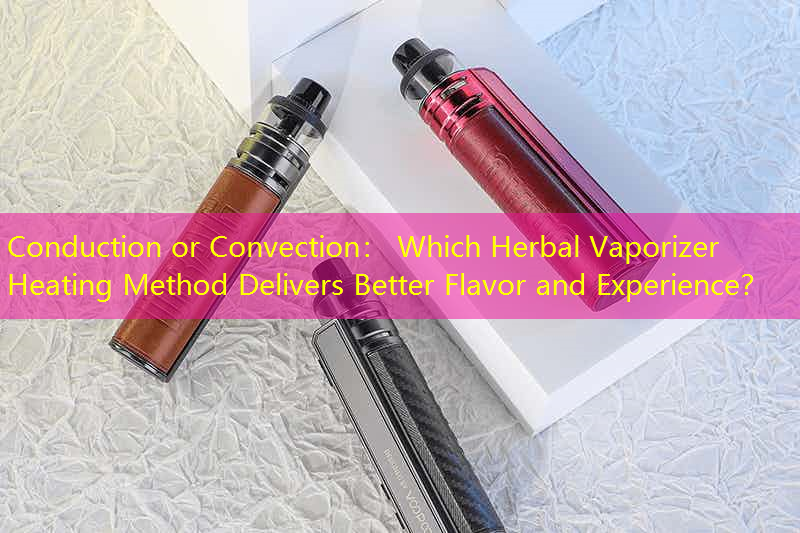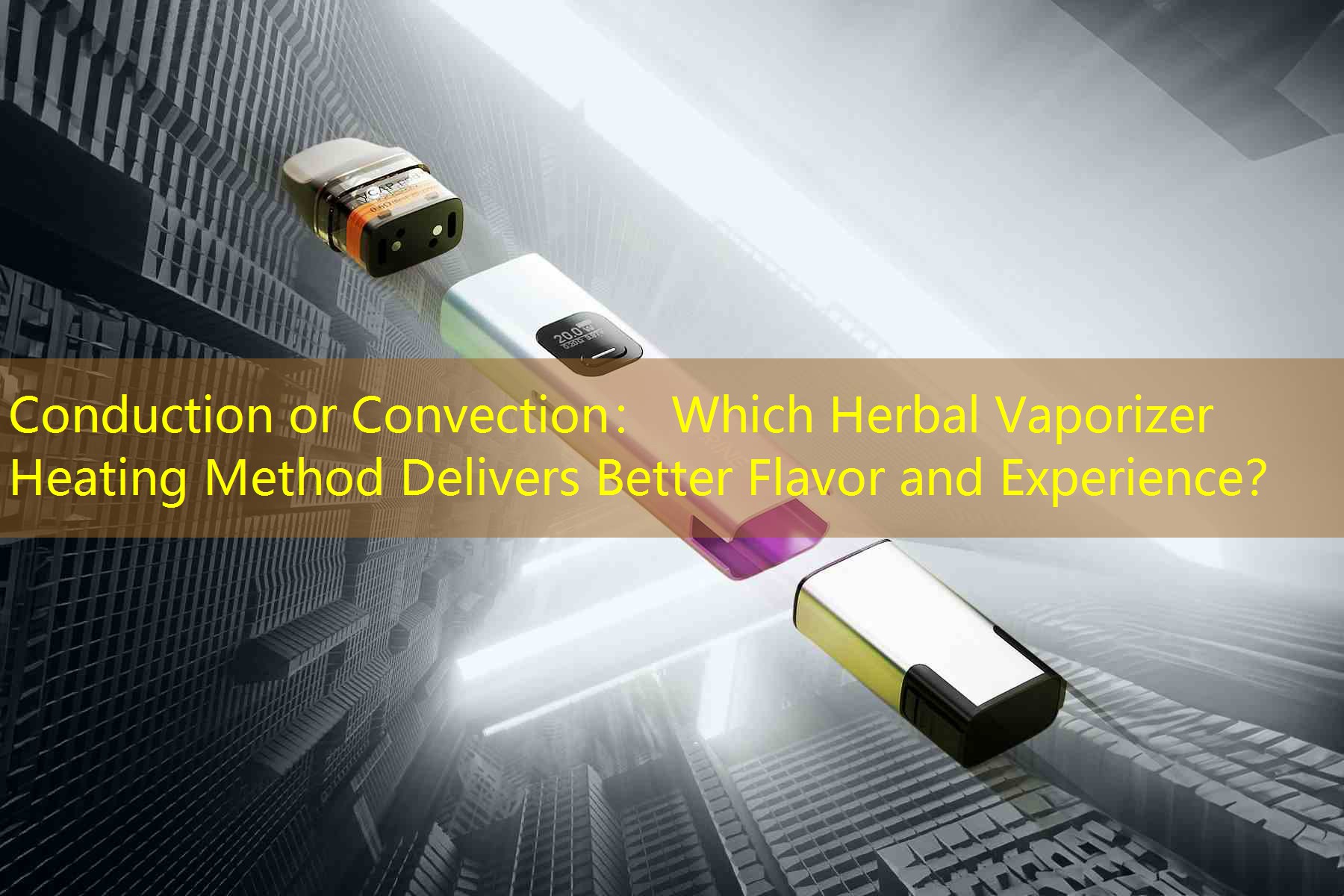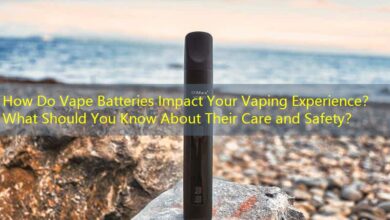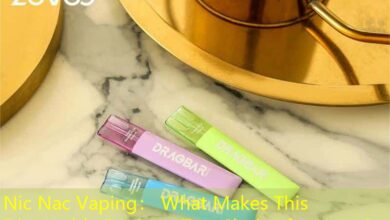Conduction or Convection: Which Herbal Vaporizer Heating Method Delivers Better Flavor and Experience?
Conduction vs. Convection: A Comprehensive Overview
In the realm of herbal vaporizers, the methods of heating materials can fundamentally alter the experience and efficacy of use. Among the prominent heating techniques, conduction and convection stand out as the two primary modes. This article seeks to delve into the intricacies of conduction and convection heating, providing an in-depth product overview, specifications, user experience, pros and cons, and an analysis of the target user demographic.
Product Overview and Specifications
Conduction Vaporizers
Conduction vaporizers operate by direct contact between the heating element and the material, allowing heat to transfer efficiently. They often come in portable models; notable examples include the Pax 3 and Mighty by Storz & Bickel.
Key specifications may include:
– Size: Typically compact, fitting comfortably in the hand (about 4 to 6 inches tall).
– Materials: Often made of aluminum or stainless steel for durability.
– Temperature Range: Generally offers presets between 356°F and 428°F (180°C – 220°C).
Convection Vaporizers
Conversely, convection vaporizers utilize hot air to evenly heat the material without direct contact. Renowned models in this category are the Firefly 2+ and Herbalizer.

Key specifications include:
– Size: Slightly larger due to more complex internal mechanisms (approximately 5 to 7 inches tall).
– Materials: Typically made with glass or ceramic elements to preserve flavor and purity.
– Temperature Control: Offers a broader range, often adjustable from 320°F to 440°F (160°C – 230°C).
Appearance and Feel
Conduction vaporizers tend to have a sleek, minimalist design, making them visually appealing and user-friendly. The mouthpieces are often designed for comfortable inhalation, and models are available in various colors and textures.
Convection vaporizers often sport a bulkier design due to the advanced technology incorporated. However, many premium models ensure that aesthetics do not compromise functionality, maintaining an elegant and ergonomic look.
Flavor Profiles and Longevity
The flavor experience with conduction vaporizers can sometimes vary due to uneven heating, which may lead to a singed taste if the temperature is too high. However, models with advanced heat distribution tech mitigate this.
Conversely, convection vaporizers are celebrated for their superior flavor delivery, as they evenly heat the herb and eliminate the risk of burning. This results in a clean, flavorful experience with each inhalation.
In terms of duration:
– Conduction models usually require less material for a decent session but may finish faster due to the intensity of heat.
– Convection models can provide more extended sessions due to the even heating, allowing for more efficient extraction of active compounds.
Battery Life and Charging Performance
Battery longevity varies widely:
– Conduction vaporizers like the Pax 3 typically offer 80-100 minutes of usage before needing a recharge, which can take about 2-3 hours.
– Convection vaporizers, such as the Firefly 2+, have a shorter active use time but recharge rapidly (around 45 minutes), allowing for quick on-the-go sessions.
User Methodology
Using Conduction Vaporizers
1. Grind your material: A fine consistency works best for even heat distribution.
2. Fill the chamber: Pack tightly but avoid overpacking to prevent airflow obstruction.
3. Select temperature: Use preset temperatures or adjust according to preference.
4. Inhale: Enjoy your session, monitoring for any changes in flavor or experience.
Using Convection Vaporizers
1. Prepare material: Similar to conduction, but a coarser grind might work better due to airflow requirements.
2. Load the bowl: Ensure even packing to maintain airflow.
3. Select temperature: Start low and adjust to find your ideal flavor.
4. Inhale: Take slow, even draws to maximize vapor production and flavor.
Pros and Cons
Conduction
Pros:
– Generally more compact and portable.
– Fast heat-up time.
– Relatively easy to use.
Cons:
– Risk of uneven heating leading to burnt flavor.
– Limited temperature control in entry models.
Convection
Pros:
– Superior flavor and efficiency.
– Even heating, reducing the chance of combustion.
Cons:

– Bulkier and often more expensive.
– Longer heat-up time in some models.
User Demographics
Conduction vaporizers appeal primarily to casual users and those seeking a portable option for on-the-go sessions. Their ease of use makes them ideal for beginners or those who prefer simplicity.
Convection vaporizers attract seasoned users and aficionados who prioritize flavor and efficiency over portability. Typically, these users are willing to invest in high-quality devices for a more refined experience.
Conclusion
In conclusion, both conduction and convection vaporizers offer unique benefits and drawbacks that cater to different preferences and needs among users. Understanding these differences is crucial for individuals looking to enhance their herbal vaping experience, allowing them to select the device that best aligns with their usage habits and desired outcomes.




